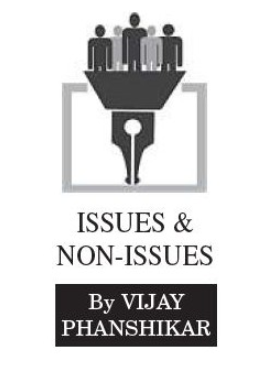Hope On Economic Front
| Date :09-Nov-2019 |

New Delhi, November 7 (PTI): Finance Minister Nirmala Sitharaman, on Thursday, reviewed the state of the economy, including stress in the financial sector, at the meeting of the Financial Stability and Development Council (FSDC), the apex body of sectoral regulators, headed by the Finance Minister.
The 21st meeting of FSDC comes against the backdrop of the economy hitting a six-year low growth rate of 5 per cent in the first quarter of 2019-20. Even some of the macroeconomic data for the second quarter does not portray an encouraging picture of the economy. ...
“Broadly, overall macro-economic issues and the state of the economy were discussed in details ...”, Reserve Bank of India (RBI) Governor Shaktikanta Das told reporters after the meeting.
SUCH an exercise is quite in tune with the need of the hour as the national economy is looking at hard times -- despite the best efforts by the Government to spruce up the process of recovery in an otherwise dominant negative sentiment in the economy. That is also the reason why Mrs. Sitharaman has taken some major decisions such as redefining the dimensions of public sector banking, in the past couple of months. The FSDC meeting also came as part of the effort to boost the process of economic recovery.
The current times offer a mix of reality and perception on the economic front. From the point of view of the massive micro-economic measures that benefitted the common man in general in the past five years, the Government has done well to take the concept of welfare to people’s doorstep. Unbelievably large numbers of common people are now enjoying the benefits of these measures such as domestic gas to every kitchen, power connection to every village, bank accounts to the lowest layer of the economic pyramid ...!
Yet, these measures appear to have their own limitations as far as the larger economic picture is concerned. These and many other measures did lend a helping hand to some segments of the economic spread, no doubt. Yet, in other sectors, things do not appear to be healthy enough. This is where the concerns become worries.
For example, despite the stress on start-ups, the number of entrepreneurs wanting to take the plunge has not risen to expected levels. If there are some administrative road-blocks in the way, there also are other reasons such as closures of countless numbers of enterprises on account of failed economics. As an effort to rectify the ills dogging the banking sector, the Government has become stricter than it ever was, in the process making it difficult for small and medium enterprises to survive the onslaught of slow-down. Most efforts to help enterprises to rebuild their dreams have met with less than warm response. And that is the point where things need proper attention.
Unfortunately, many entrepreneurs are opting for closure of their respective enterprises rather than digging their heels and fighting back for recovery. Another aspect of this misfortune is that the entrepreneurs, as individuals, do not stand affected in a big way. For, even when their units are closed, they are plush with enough money to live well, with only a small percentage of them having to face really, really bad times on personal financial fronts. Most others are okay with closure, with their personal finances having been in safe zones.
Those who suffer in this situation is the work-force. Lakhs of people, thus, are facing unemployment. And it is this segment that is making things look bleak.
This is the reality part of the story!
On the perception front, political propaganda still operates dirty levers to drive an unholy agenda. And it is on this front that the Government is now trying to rectify things.
Mrs. Sitharaman’s efforts are clear-headed and without political agenda. Her actions reflect the seriousness with which the Government is approaching the challenge of the economic slow-down. The sincerity of the Government in this regard is the actual point of strong hope that things would be okay in due course of time.
Another strong point is the overall confidence the people have in the Government’s effort to offer a corruption-free regime. Even those dealing in hard numbers of trade and business and industry recognise that the Government has succeeded in reducing corruption to lowest possible levels. In due course of time, this sentiment will grow and lend the economy certain strength.
There may be dark patches on the economic fabric, but there also are bright areas that are attracting the world to India. The Government does not deny both. It is evidently working to rectify things in the most professional manner, the politically-driven allegations notwithstanding. The fight is not just with internal dimensions, but also with the global melt-down. In this fight, as other countries too are engaged similarly, India’s overall performance is fairly successful, no matter the smaller details that would get eventually sorted out.
The major rectification in the banking sector, the swoop on wrong-doers in financial and industrial sectors, an altered tax regime that promises further reforms, a nearly corruption-free regime, and a clear-headed thinking on what the larger economic picture must be are expected to bring in good days in the next some time.
These are the obvious points of hope and faith in the Government’s measures of economic recovery. No matter the slide in the growth rate, there are reasons to believe that things are being taken care of at the highest levels, Mrs. Sitharaman’s meeting with the FSDC is one indicator. It is a sign of the welcome seriousness that marks the Government’s effort.